We may receive a commission when you use our affiliate links. However, this does not impact our recommendations.
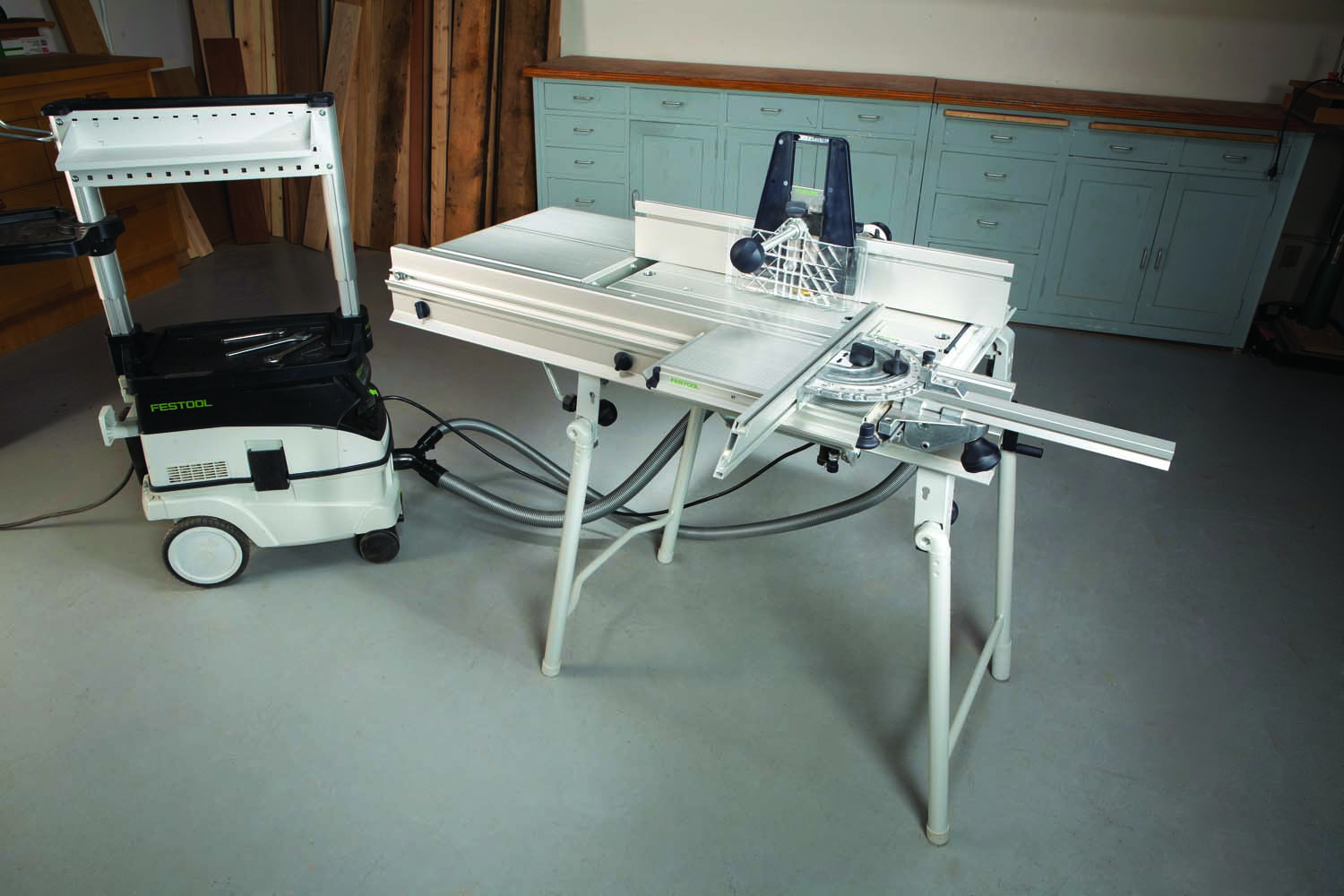
We may receive a commission when you use our affiliate links. However, this does not impact our recommendations.
Tool: CMS Router Table
Manufacturer: Festool
Price: $1720
On one end of the spectrum, there’s the router screwed to the underside of a piece of plywood, supported on sawhorses, with a board clamped across for a fence. On the other end, there’s the Festool CMS router table.
The basic principle and end result may be the same, but then, the same could be said for a driving a ’74 Pinto station wagon versus a brand new BMW.
I’ve had the “pleasure” of owning both the router screwed to plywood and the ’74 Pinto. Never owned the brand new BMW, but I’ve had a chance to test drive the new Festool CMS router table – with all the options.
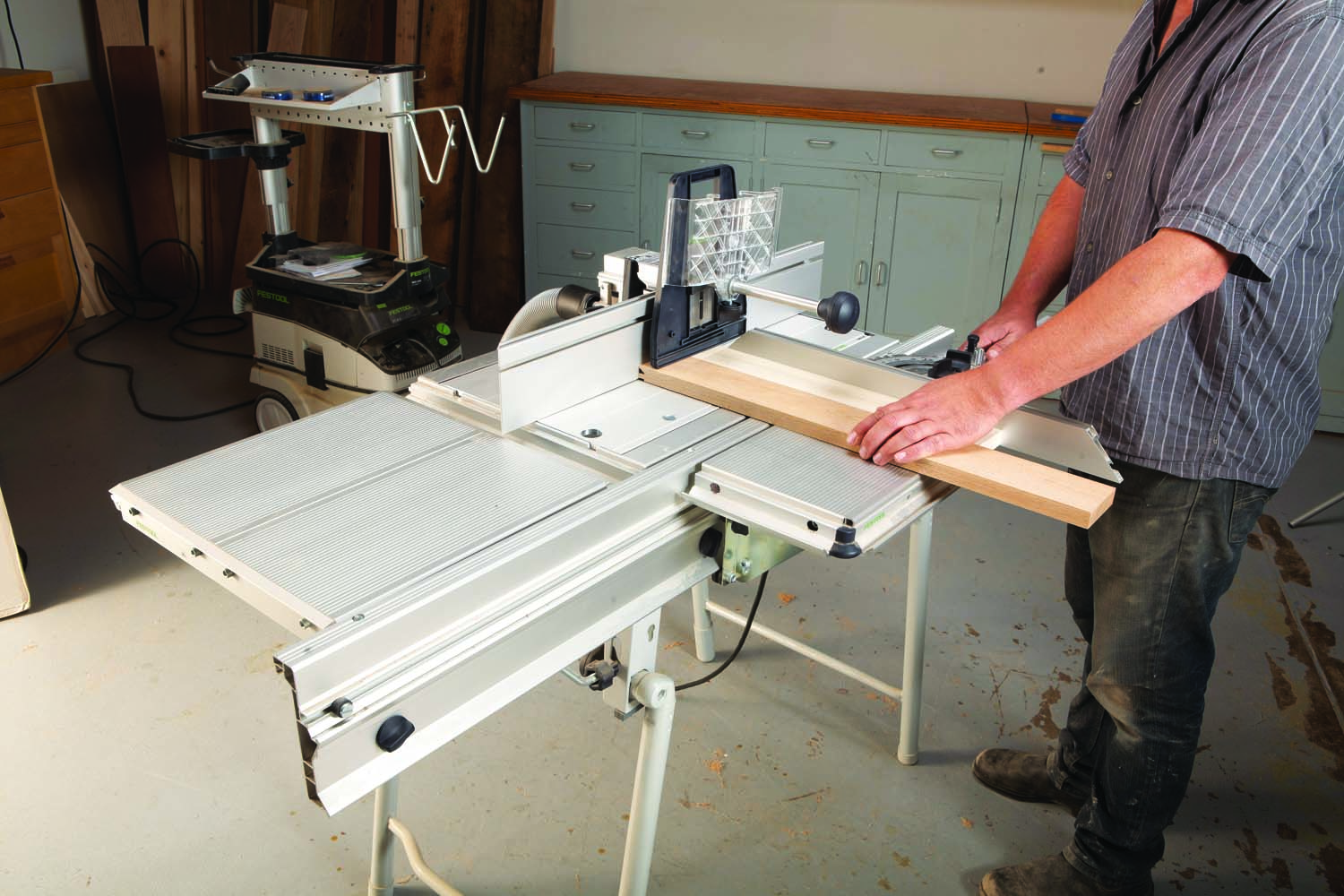
1. A sliding table glides on a rail attached to the front of the table. Used with the miter gauge, this is the perfect setup for cuts on the ends of narrow boards.
The sliding table is the most obvious feature of the CMS (Photo 1). The table glides along the front rail so smoothly that it’s hard to stop running it back and forth just for fun. A beefy miter gauge attaches to the sliding table. The miter gauge’s back rail slides back and forth to allow work support as close to the fence as possible. Coupled with the sliding table, cope cuts on narrow boards are a breeze. I’d like to see a built-in hold-down on the miter gauge’s fence, though.
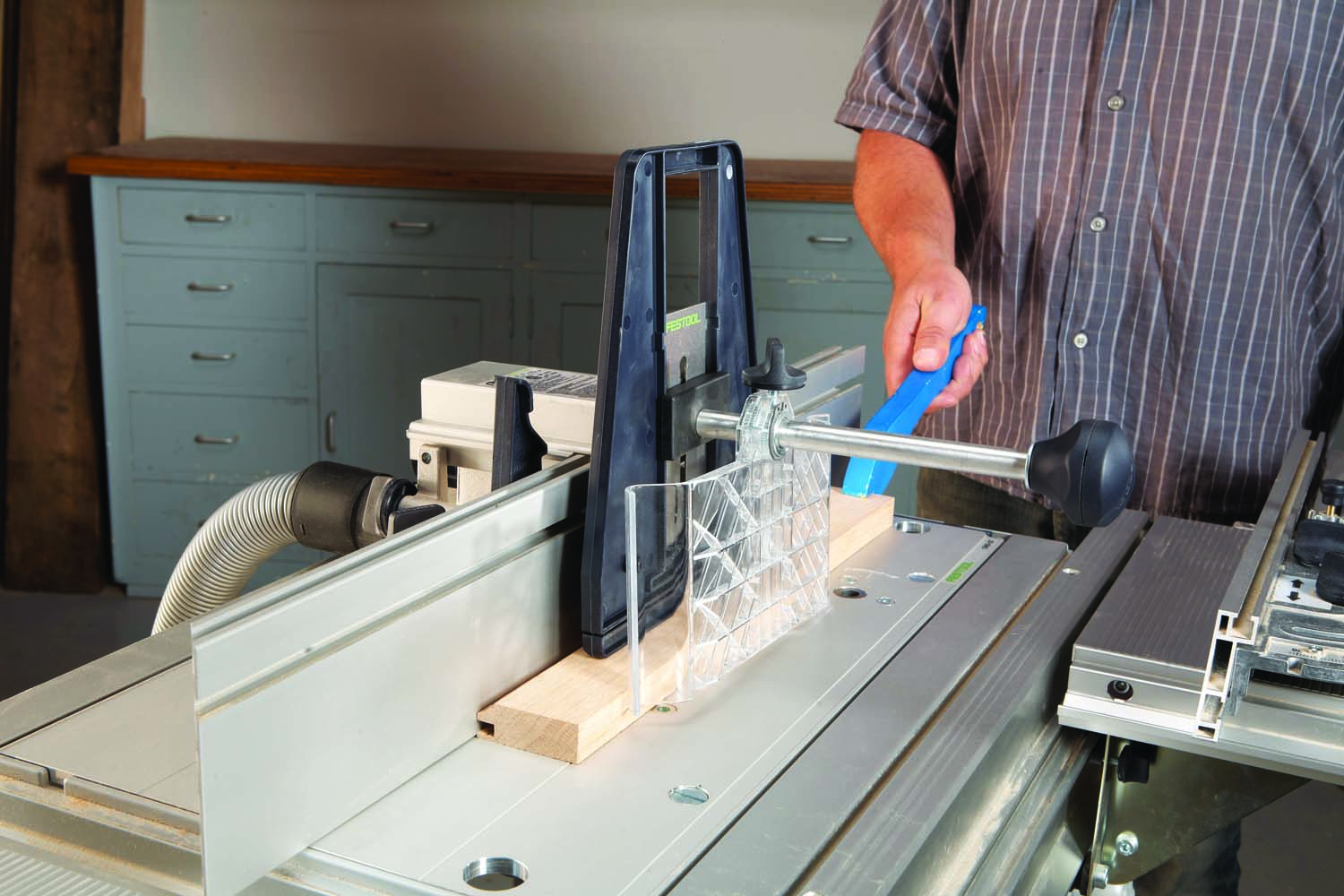
2. A featherboard and hold-down are integrated into a single unit that’s mounted to a steel rod. The featherboard rotates 180°, so it’s out of the way when you don’t need it.
The CMS does have a hold-down solution on the main fence, however. It’s a two-in-one hold-down/featherboard system for securing stock (Photo 2). Both components attach to a steel rod. A single, generous knob at the rod’s end is used for adjusting both. The steel rod does get in the way at times, even preventing use of a push stick in certain situations. All in all, the system works quite well.
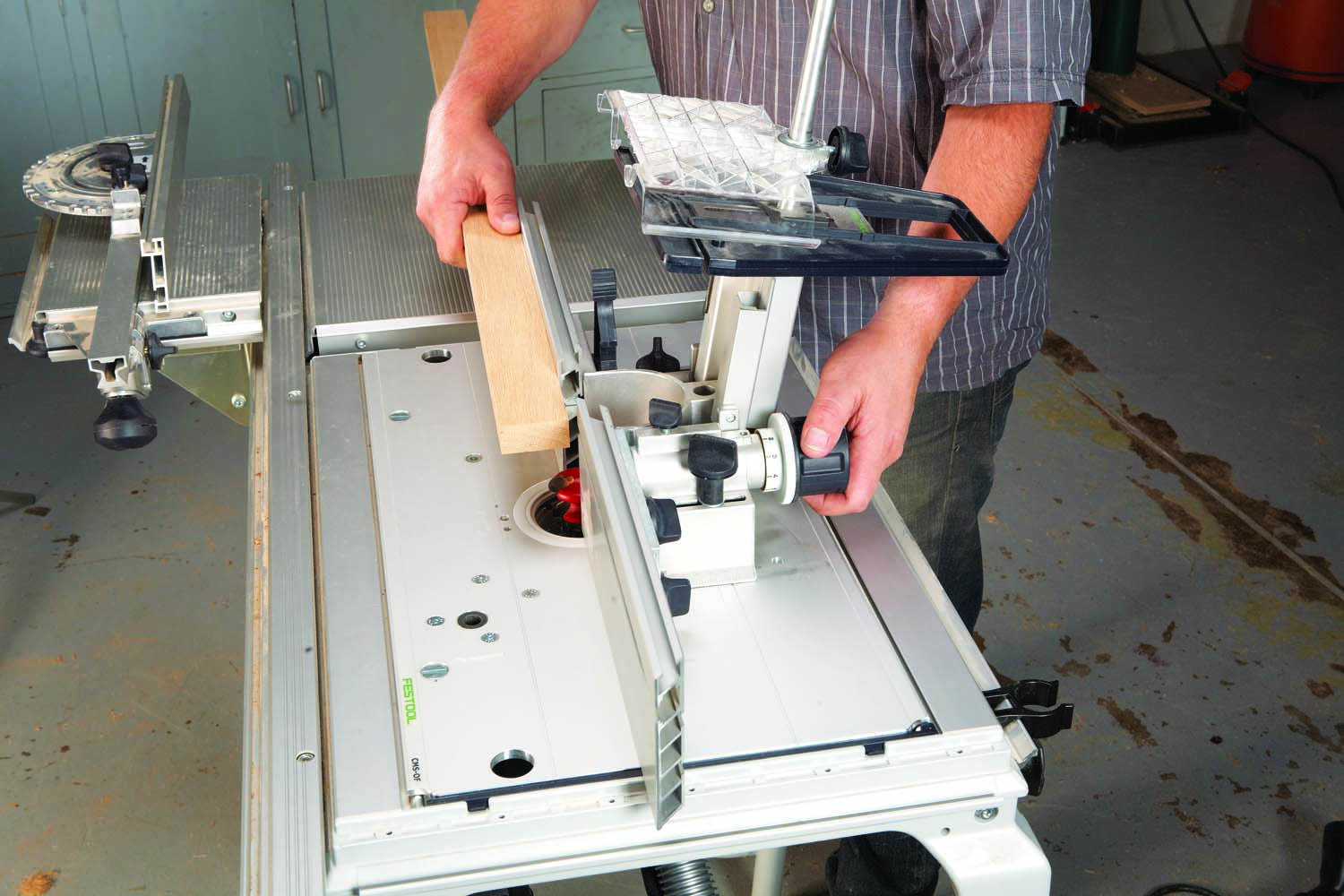
3. A micro-adjustable infeed fence is nice when you’re using a bit that cuts a full profile, or for light jointing.
The CMS’ main fence is the heart of this table. It’s a split fence; the two halves slide in and out to accomodate different size bits. A micro-adjust knob lets you offset the infeed fence up to about 5/16″ from the outfeed (Photo 3). This is useful for routing a full profile that leaves the board slightly narrower at the outfeed end. Some people also use this feature for light jointing.
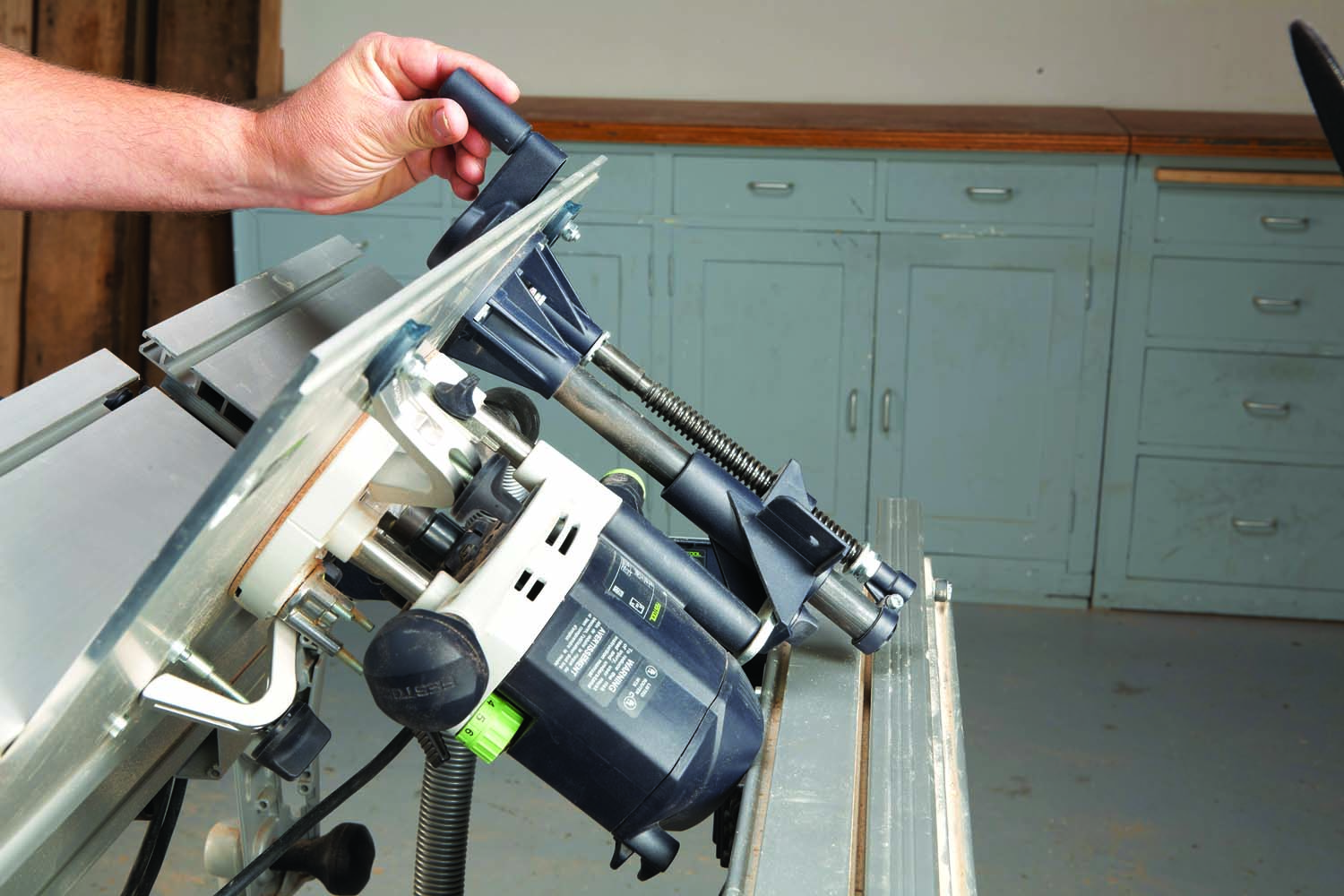
4. Above-the-table bit-height adjustment is smooth and precise.
The bit’s height is adjustable from above the table (Photo 4); much nicer than reaching underneath the table. Also, the height adjustment handle is far enough forward on the table to not interfere with the fence. I’ve used router tables where you can’t adjust the bit’s height after setting the fence!
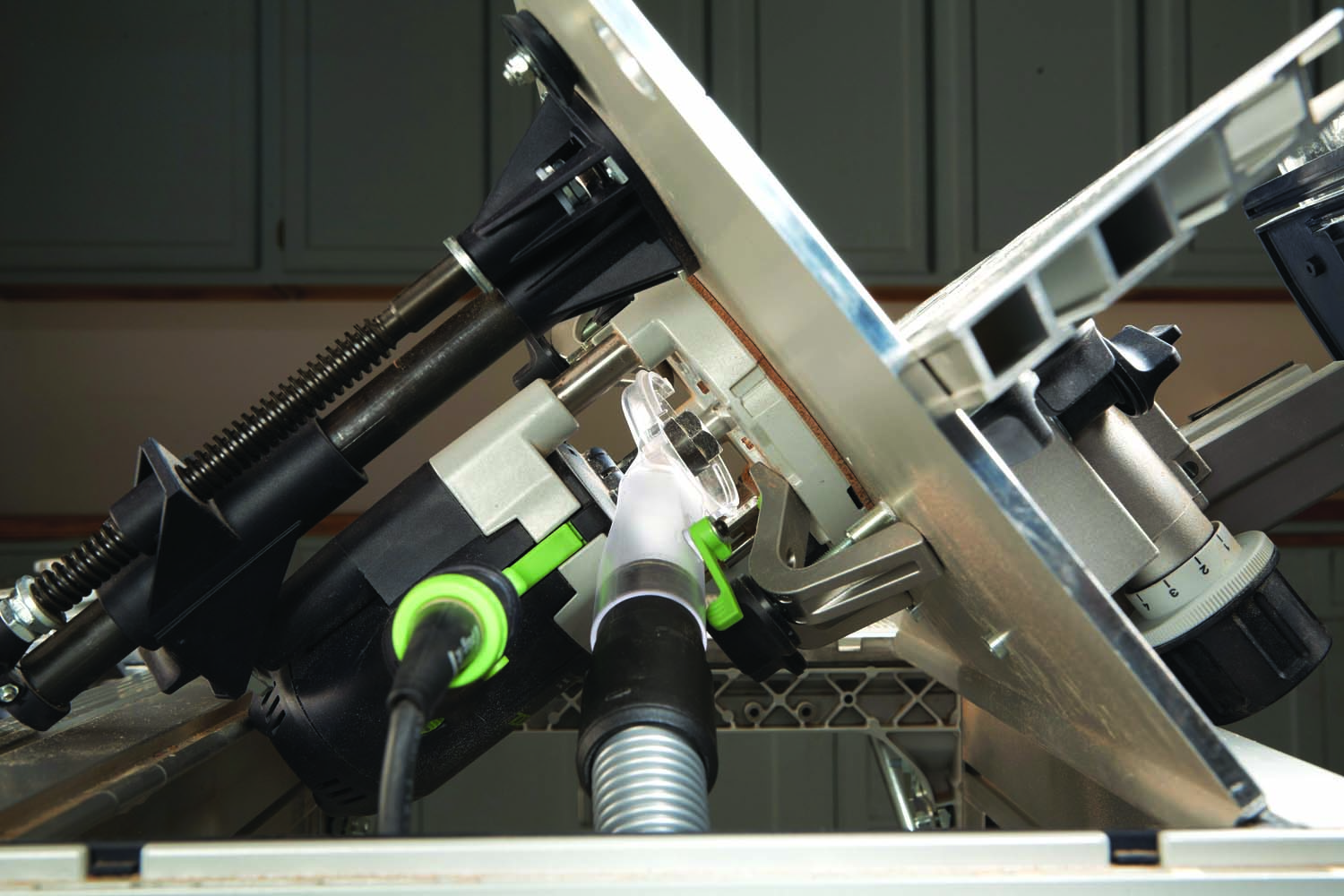
5. A dust shroud under the table surrounds the router’s collet. Combined with the dust port in the fence, there’s virtually no escape for dust.
Excellent dust extraction is a Festool hallmark, and the CMS’ is no exception. It has the usual port behind the fence, but the lower port is unique (Photo 5). A shroud clips to the router’s base, so the bit is surrounded by suction.
Overall, the CMS is a well engineered piece of equipment. As a stationary shop tool, I’d like more heft for stability, as well as a larger table. But with its fold-up legs and relatively light weight, the CMS is clearly aimed at the contractor who needs portable tools capable of fine work. For that, the CMS hits the bullseye.
As for my minor gripes, well, I can’t wait to see the second generation, because the folks at Festool don’t rest on their laurels when it comes to making improvements.
The CMS is compatible with either Festool’s OF1400 or OF1010 routers. It’s available as pictured –with all the options – or in a stripped down version minus the sliding table and extension table. Both of those options are also available in a CMS table that attaches to Festool’s multi-function work table.
Here are some supplies and tools we find essential in our everyday work around the shop. We may receive a commission from sales referred by our links; however, we have carefully selected these products for their usefulness and quality.








